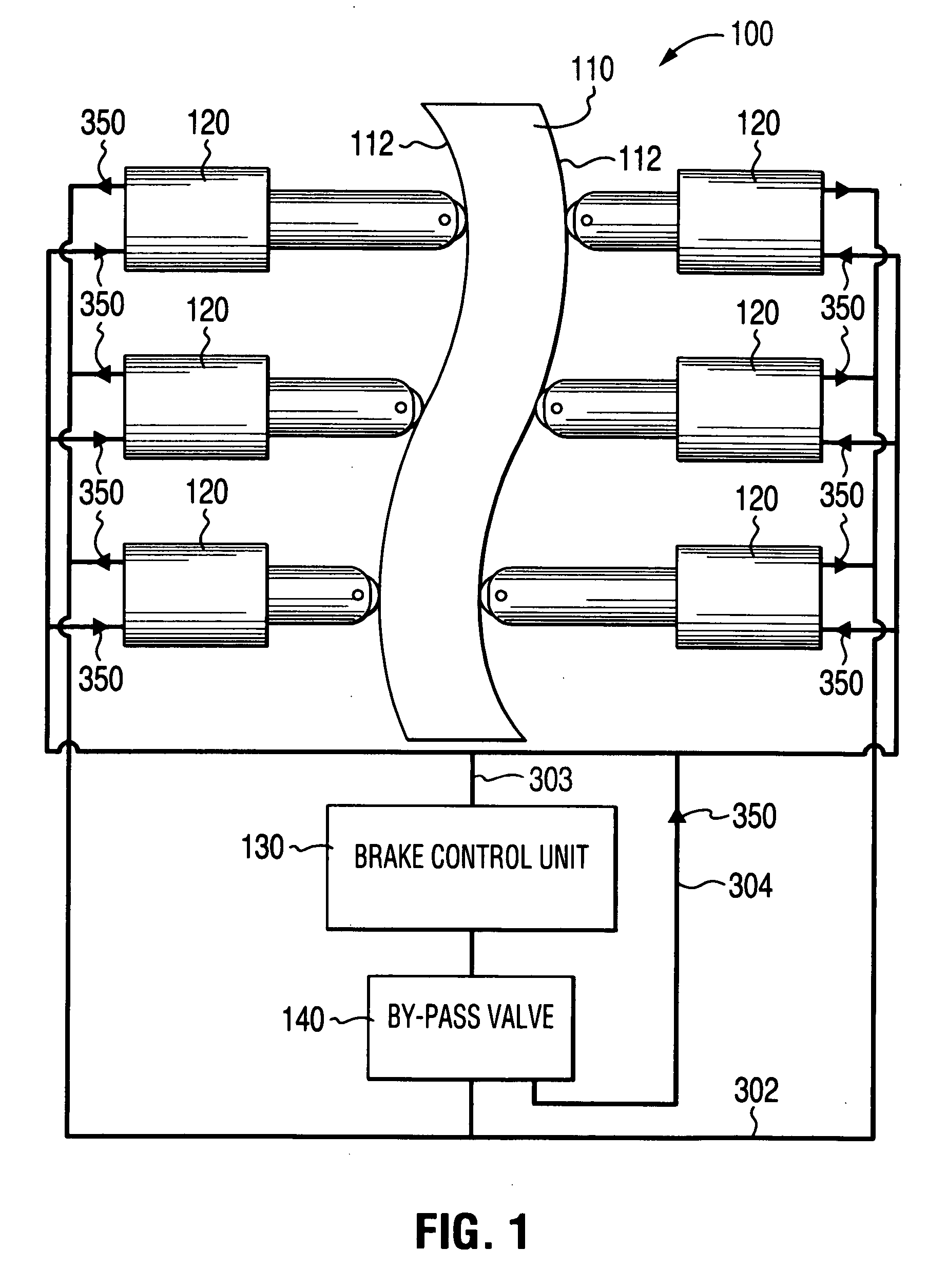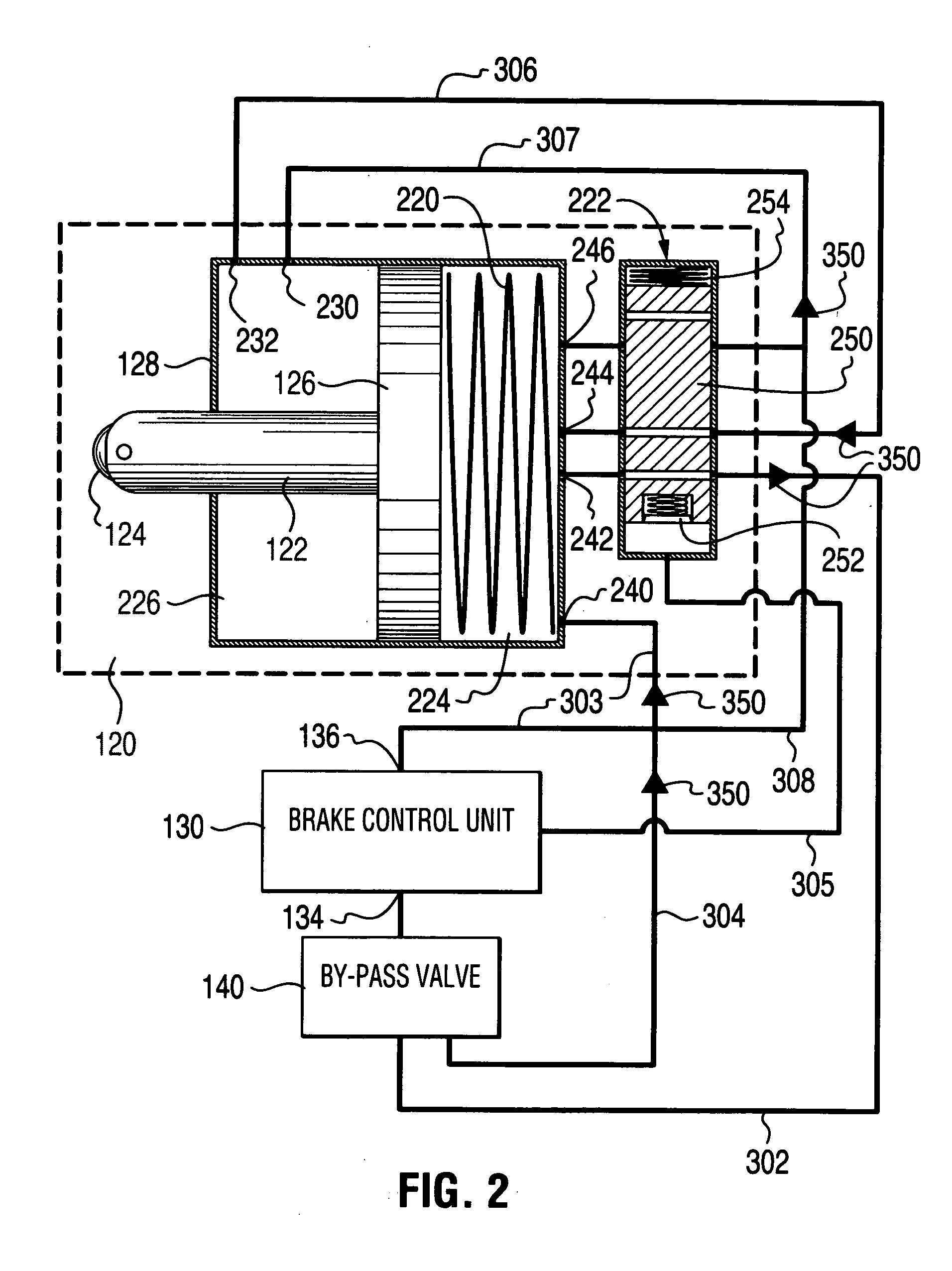Self-energizing brake system
a self-energizing, brake technology, applied in the direction of braking system, mechanical apparatus, braking element arrangement, etc., can solve the problems of high manufacturing cost, high cost, and high cost of braking system in common us
- Summary
- Abstract
- Description
- Claims
- Application Information
AI Technical Summary
Benefits of technology
Problems solved by technology
Method used
Image
Examples
Embodiment Construction
[0016]FIG. 1 is a schematic representation of an exemplary embodiment of a braking system 100 according to the present invention for use in, for example, a wheeled vehicle. The braking system 100 is comprised of an interface mechanism in the form of a rotor I 10, a plurality of actuators 120, a brake control unit 130 and a by-pass valve 140. The rotor 110 can be connected to a vehicle wheel (not shown) so as to rotate when the wheel rotates. The braking system 100 has a brake-on and a brake-off mode of operation.
[0017] In the brake-on mode of operation, each of the plurality of actuators 120 engages the rotor 110 to impart a braking (decelerative) force to the rotor 110 and thereby to the wheel. In the brake-off mode of operation, none of the plurality of actuators 120 applies any substantial braking force to the rotor 110. The brake control unit 130 is operable between a brake-on position and a brake-off position that effect the brake-on and the brake-off modes of operation respec...
PUM
 Login to View More
Login to View More Abstract
Description
Claims
Application Information
 Login to View More
Login to View More - R&D
- Intellectual Property
- Life Sciences
- Materials
- Tech Scout
- Unparalleled Data Quality
- Higher Quality Content
- 60% Fewer Hallucinations
Browse by: Latest US Patents, China's latest patents, Technical Efficacy Thesaurus, Application Domain, Technology Topic, Popular Technical Reports.
© 2025 PatSnap. All rights reserved.Legal|Privacy policy|Modern Slavery Act Transparency Statement|Sitemap|About US| Contact US: help@patsnap.com



